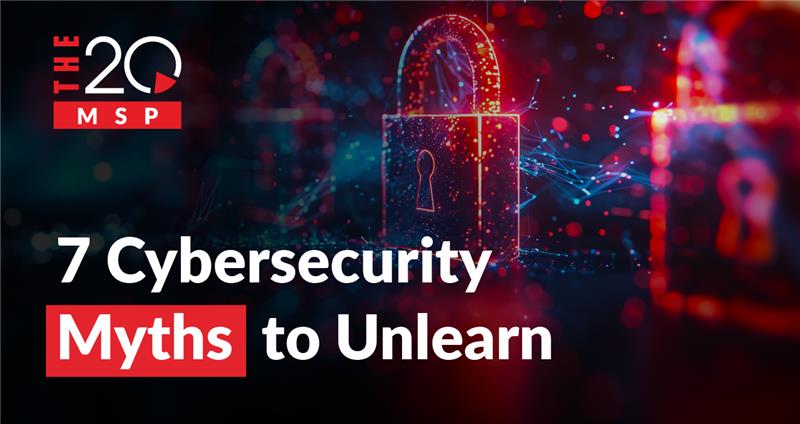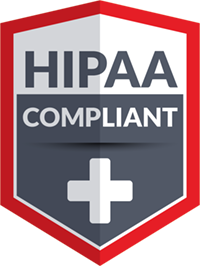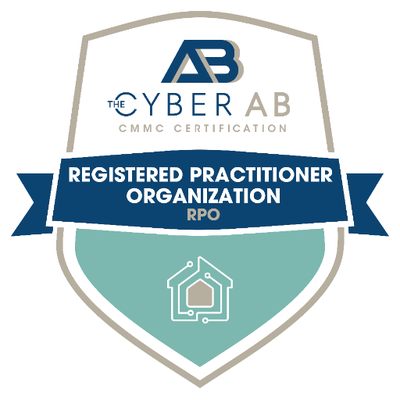
7 Cybersecurity Myths to Unlearn
Cybersecurity isn’t exciting. But neither is a trip to the dentist or getting an oil change. You might not feel like getting proactive about protecting your digital assets, but that’s no excuse not to.
But what does ‘getting proactive’ actually entail? The first thing to do is educate yourself. When it comes to avoiding cyberattacks, awareness is everything.
To help you out, we’re sharing – and debunking – seven cybersecurity myths. If you can successfully ‘unlearn’ these common misconceptions about cybercrime and the best way to avoid it, you’ll be well on your way to a more secure future.
Myth #1: Cyber risk is separate from other types of risk.
Simply put, cyber risk is just another form of risk. Truly embracing this requires more than basic cyber awareness; it demands bringing cybersecurity into our daily lives. Just as getting in a car prompts you to buckle up, receiving an email with a suspicious link should remind you to “think before you click.”
While it won’t be easy, with effective cyber awareness training and collaboration, we can remind each other to stay alert, stay smart, and stay safe.
Myth #2: Digital and physical security are completely distinct.
Similar to the previous myth, this misconception starts by treating cyber risk as somehow unique or separate from other kinds of dangers in the world. But the truth is, the rise of IoT and smart devices has blurred the lines between physical and digital security, demanding a shift in our approach and mindset.
The explosion of company attack surfaces – any part of your organization that a hacker could exploit – means that hackers are spoiled for choice when breaching your defenses. You simply cannot afford to overlook your physical devices; a single vulnerability – like the compromise of over 150,00 Verkada security cameras – can prove devastating.
The solution, like with all IT challenges, lies in the combination of many security strategies, including endpoint management, robust security policies, and, of course, cyber awareness training.
Myth #3: You can reach 100% cybersecurity.
The idea of complete security in cybersecurity is nothing but an illusion – someone had to say it. No matter what anyone claims, total security is an ideal we strive toward, but never fully achieve.
Every security tool, training program, and strategy is human-made, and therefore imperfect. Hackers are always on the lookout for weaknesses and gaps in the latest defenses. When they find them, we’re forced to improve our tools and processes. It’s a game of cat and mouse, and risk will always exist.
Our focus, then, should be on staying ahead of threats through best practices such as regular software updates and multi-factor authentication. We may not be able to eliminate risk, but that certainly doesn’t mean we have to settle for zero protection.
Myth #4: You’ll know when your computer is infected by a virus.
Pop-ups, slow performance, and system crashes are typically considered signs of a computer infection, and while these symptoms can be indicators, the reality is that malware and other infections are often much sneakier.
Hackers don’t want to be caught. Think about it: if an IT team detects malicious software, it can be quickly removed. That’s why hackers design malware that operates silently, lurking in the background – data breaches can go unnoticed for over 277 days! Even if your computer seems to be running perfectly, there’s still a chance it has been compromised.
This is why it’s crucial to keep your antivirus software up to date and have your IT team conduct regular system scans. Having a trusted IT partner such as a managed service provider (MSP) comes in handy here. An experienced team of professionals can ensure your software is always current and help detect hidden malware through 24/7 monitoring and threat detection – we know we do!
Myth #5: Deleting a file means it’s gone forever.
You might assume that deleting a file means it’s permanently gone, but the reality is more complex.
When you empty your recycling bin, the data isn’t completely erased. Hackers can use file recovery programs to reconstruct deleted data from your hard drive. What’s more, deleting files off your computer doesn’t thereby remove them from your company’s cloud storage. In fact, some cloud storage providers allow file recovery for up to 30 days. This typically convenient feature can inadvertently provide a hacker with a route to accessing ‘deleted’ files.
When you need a file to be deleted with a capital D – i.e., made all but unrecoverable – you can use reliable file shredding software that overwrites data, making file recovery nearly impossible. You should also regularly audit your cloud storage to remove unnecessary files and confirm that they have been permanently erased.
Myth #6: If it’s on an app store, it’s safe.
It’s easy to assume that downloading an app from a trusted marketplace like Apple’s App Store or the Google Play marketplace guarantees its safety. Unfortunately, that’s not always true.
While these app stores implement robust security measures, there are limitations to the vetting process and some less-than-legitimate apps can sometimes slip through. Additionally, although not outright harmful, some apps may contain unaddressed security vulnerabilities, putting users at risk.
Bottom line – always check reviews before downloading any app and pay attention to the permissions the app may request, much like with IoT devices. And don’t forget to keep your apps updated; regular updates help eliminate potential security vulnerabilities that could lead to cyberattacks.
Myth #7: Cybersecurity Is IT’s responsibility alone.
While your IT team certainly plays a crucial role in cybersecurity – configuring security tools and implementing policies – it’s important to recognize that cybersecurity is a collective effort involving everyone, from employees to administration.
This is because hackers know what they’re doing. When targeting a company, do you think they’ll focus on IT accounts, or go after potentially uninformed user accounts? The majority of the time, it’s the user. Hackers target what they perceive as the weakest links in a company’s defenses, which is why training and collaboration are essential. By working together, IT companies and the businesses they serve can minimize weak links and keep bad actors at bay. Staying safe is a group effort, and the more we cooperate, the stronger we’ll be.
Finding a Provider That Gets IT
Some of these myths might have you rethinking your approach to cybersecurity – and that’s a good thing! We also hope you’ll use what you’ve learned here to detect overpromises from IT providers eager for your business. If someone claims they’ll handle everything, that should give you pause. As we’ve covered, cybersecurity isn’t the IT team’s responsibility alone, and anyone who suggests otherwise is oversimplifying things.
You shoud also be skeptical about companies that promise 100% protection or security solutions with zero downside. Again, total protection is a myth – and there is always a tradeoff between security and convenience.
Ready to work with an MSP who will give it to you straight? Consider reaching out to The 20 MSP! Our comprehensive IT services include cybersecurity solutions custom-built for small and medium-sized companies. We believe in communication, transparency, and providing kicka** IT support and cybersecurity. Get in touch today to learn more.



